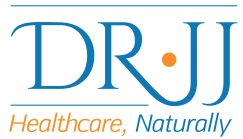
As human beings in this post-industrial age world, we are exposed to chemicals and toxins on a regular basis from sources that are even considered ‘household items.’
While many families have tried to move to more natural materials and cleaners in their homes, there are still many instances where they are exposed to these toxins elsewhere.
In this article, I discuss various toxins to avoid; failing all else, there are naturopathic detoxification solutions that I can help you with to reduce the buildup of these same toxins in your body.
Our Source
An extremely helpful study in understanding this is the EPA’s National Human Adipose Tissue Survey.
Although it may be an American study, we import a lot of our products from the USA, and with our long natural border and shared ecosystem, our Canadian results would likely not be much different.
The study has taken adipose tissue – fat tissue – and tested it for ten different volatile compounds and five semi-volatile compounds.
Most Common Toxins
To help you understand how pervasive these toxins are, I’ve taken the five most common toxins and done further research. That way, you can better understand the risks.
1. Styrene
Styrene comes primarily from reinforced plastics, so if you work in an industry that utilizes or produces these, you may be at higher risk of elevated toxicity.
This study shows that occupational exposure can cause acute eye irritation, respiratory tract irritation, genotoxic effects and persistent nervous system effects such as hearing issues.
As well, there is some evidence that it may be carcinogenic, though more studies are needed to prove this link.
Many examples of reinforced plastics come from decorative plastic plate used in building, such as plastic flooring, wallpaper, doors and windows.
2. Xylene
Xylene is a commonly used solvent, employed by the paint, leather, rubber and printing industries, but it is also found in gasoline and cigarette smoke.
As studied and covered in this article, the human body absorbs xylene through inhalation, ingestion, or skin/eye contact.
We are most often exposed to it through soil and groundwater contamination, for example, from petroleum products that have leaked via underground tanks or other sources.
3. Chloroform
Chloroform, famous from midcentury detective movies, is a lot more pervasive than you would think, particularly if you’re a swimmer.
In this article, you can read how indoor swimming pools provide several different exposure opportunities: through ingestion, absorption through the skin, and inhalation both during swimming as well as during resting.
Because chloroform is a ‘probable’ carcinogen, it recommends that pools investigate alternate methods of disinfection.
Other than through indoor pools, chloroform is also found in the water and soil, coming from chemical companies, paper mills and sewage treatment plants.
Finally, when chlorine is added to drinking water in order to destroy bacteria, chloroform is formed in minute amounts as a byproduct, though not in large enough amounts to harm.

4. Benzene
Benzene is a toxin that comes from both natural and manmade sources, and as a result can be found in the soil, water and air.
Benzene is generally produced from petroleum, and is used widely for making Styrofoam, plastics, resins, nylon and synthetic fibers, rubbers, pesticides, dyes, lubricants, detergents and drugs.
Benzene can also be found in cigarette smoke, gasoline and crude oil.
This very clear article is an excellent source of information on how to identify sources of benzene toxicity.
It has been identified and studied specifically because it has been linked directly with various cancers, as well as compromising several vital systems such as the respiratory, cardiovascular, reproductive, immune, nervous and endocrine systems.
5. Cresol
Lastly, we have cresol, which is most commonly absorbed through the lungs via the air we breathe.
They are released into the air through cigarette smoke, vehicle exhaust, burning wood or trash, and also from companies that use or manufacture cresols.
They are commonly found in solvents, and can be released into the air from paint and varnish, chemical labs, insulation lacquers on copper wires, coal gasification facilities, and via the wood preservation process.
However, and perhaps more disturbingly, cresols can also be found in soaps and disinfectants, as well as in many of our foods.
For those livestock producers who are engaged in daily cleaning, feeding and maintenance of swine and other animals, this study links their exposure to hazardous air pollutants with cancer, neurological disorders, respiratory issues, and reproductive and developmental disorders.
Questions? Ask Dr. JJ
I’m Dr. JJ, a naturopathic doctor located in Toronto, and I have made my career out of looking out for the health and wellbeing of my patients and my fellow Canadians.
It’s my hope to be able to educate people so they can make careful, informed decisions about what they bring into their home, what they eat, and other factors related to their health.
If you have concerns about toxins that you may have been exposed to, and want more information about how to detoxify, I encourage you to reach out now to book a consultation with me, so I can help you with your unique case.
If you have questions about naturopathic medicine, or you’d like to take your first step into the world of naturopathy, contact me, Dr. JJ, and let’s book an appointment.
Yours in health,
Dr. JJ Dugoua, Naturopathic Doctor
600 Sherbourne St, Suite 315,
Toronto, ON M4X 1W4
-https://goo.gl/maps/6VDXwiCihRpDRo5A9
Dr. JJ Dugoua is a naturopathic doctor in Toronto and has a PhD in Pharmaceutical Sciences. His clinic provides solutions for many health concerns and has a special focus on thyroid health issues.


